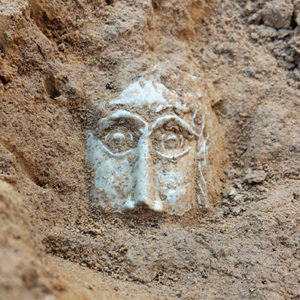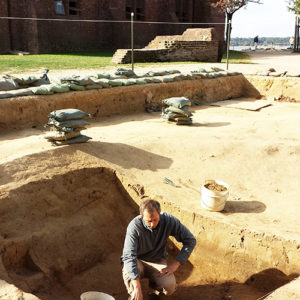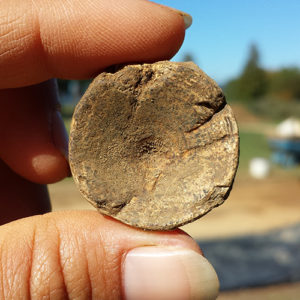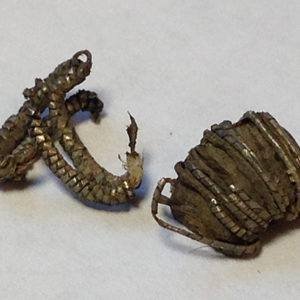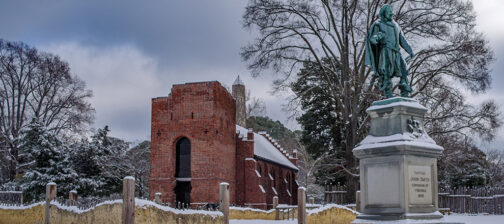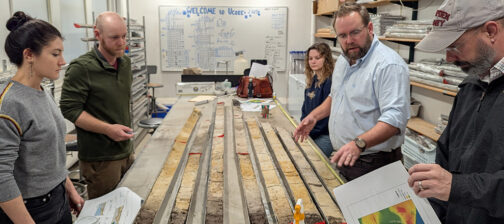A corner may be emerging in the large pit feature found just northeast of the 1608 James Fort extension, but there is not yet a posthole at that corner to prove for certain that the archaeologists are working in an early structure.
The pit feature has been quartered so the archaeologists can clearly see the profile of the soil layers as they gradually work downward. They are still working in the first quarter. A layer of clay along the sides of the pit seals the subsoil level that predates English activity—but down at the emerging corner, that layer of clay seals a layer of dark loam that may reveal human activity.
“The archaeologists are starting to see some of the shape of this feature because along the slope they are reaching the undisturbed subsoil on the sides,” said Senior Jamestown Rediscovery Archaeologist Danny Schmidt.
Within the past few weeks, in a layer of soil that sat higher in the pit (and thus represents a later moment in time than the layers below it), archaeologists found the face from the neck of a Bartmann jug (German saltglazed stoneware that has been found many times across the site of the original 1607 fort).
The archaeologists for the Jamestown Rediscovery Project also found a lot of sturgeon scutes and a shark vertebra with butcher marks showing it was processed to be eaten.
“Predominantly, the bones we are finding are wild animal remains, which indicates this may be from the first years of the colony when the colonists are foraging and scraping by to survive,” Schmidt said.
Dr. William M. Kelso, Director of archaeological research and interpretation at Historic Jamestowne, said the team may complete only this first quarter in the remaining archaeological season for 2014.
It’s possible that these artifacts and this summer’s other work in the open units by the Preservation Virginia welcome gate are pointing to an important structure—only the second fort-period structure the Jamestown Rediscovery archaeologists have examined outside the James Fort’s original triangular palisade. The first was Structure 165, “The Factory” building outside the southeast bulwark of the fort that was investigated more than a decade ago. The new feature may be a complementary structure to The Factory.
In 2011 archaeologists followed the markings of a palisade wall jutting east off of the original James Fort’s eastern wall. Thought to be part of an extension that turned the original three-sided fort into one with five sides, a total of 69 feet of the wall was uncovered between excavations in 2003 and 2011. Now the archaeologists may have found the terminus of that wall: 15 feet to the east of where they last dug that eastern palisade in 2011 sits a series of postholes and the pit feature.
related images
- Bartmann jug face found in the pit feature
- Jamestown Rediscovery Archaeologist Danny Schmidt working in the feature
- Shark vertebra with butcher marks
- Silver thread associated with a button found in the feature



